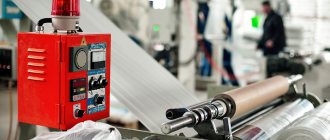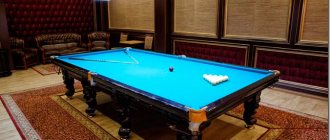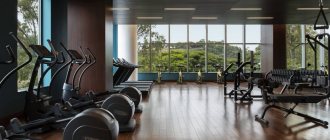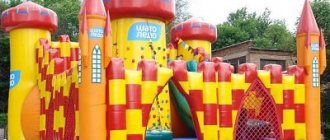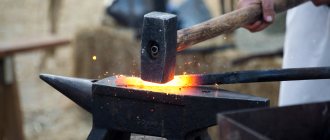The market for wooden pallets in the Russian Federation is showing stable growth. Recently, sales volumes have increased by almost 40%. This is due to an increase in cargo transportation. About 25 million wooden pallets are sold annually. Our own supply is not enough. Buyers are forced to turn to foreign manufacturers. On average, about 250,000 pieces of wooden pallets are imported into the Russian Federation. The market capacity in the Russian Federation is about 7 billion rubles. The trend towards increasing cargo transportation continues, so in the future the demand for products will also continue to grow. If you now organize the production of pallets as a business, you can quickly achieve payback and start making high profits.
1. Market analysis 2. Business registration 3. Manufacturing technology of wooden pallets (pallets) 4. Selection of premises 5. Equipment for production 6. Purchasing of materials 7. Recruitment of personnel 8. Cost of manufacturing pallets (pallets) 9. Analysis of the product sales market 10. Marketing plan 11. Analysis of possible risks
Market analysis
The popularity of wooden packaging in the Russian Federation is facilitated by the trend towards an increase in cargo turnover and a revision of the attitude towards space. Organizations are looking to optimize costs and use space more efficiently. Wooden pallets wear out. Therefore, customers are forced to update the product list. The growth dynamics will continue over the next few years. It is planned that the market will grow by 4.5 6%.
Sales of pallets are possible in the Russian Federation and abroad. Russian pallets are bought by Germany and India. Cooperation with other countries is possible.
The demand for wooden pallets in the Russian Federation is constantly growing
Who buys pallets?
Selling pallets at retail does not make sense. You need to look for wholesale buyers among large companies. Potential pallet buyers may be:
- Companies transporting goods to all countries of the world.
- Enterprises producing goods: machines, furniture, household appliances, etc.
- Greenhouses and farms selling products.
- Trade centers and large markets.
- Companies specializing in the provision of warehousing services that take various goods for storage.
Business registration
Pallets are usually ordered by large manufacturers. It is easier to cooperate with organizations registered as an LLC. The choice of this form of ownership is considered optimal. The person registering the LLC is required to develop a charter, form an authorized capital, and document the decision to create the company. The following papers need to be prepared:
- completed application;
- receipt for payment of state duty;
- charter;
- decision to create an LLC;
- document confirming the presence of a legal address.
However, at first, registration as an individual entrepreneur is acceptable. The form of ownership is suitable for a businessman who does not plan to launch a large line for the production of pallets.
Registering as an individual entrepreneur is easier. The package of documents has been reduced. To become an individual entrepreneur, just fill out an application and contact the Federal Tax Service.
You need to have the following documents with you:
- application for registration as an individual entrepreneur;
- ID card and TIN;
- a certificate of the chosen taxation system;
- receipt for payment of state duty.
An individual entrepreneur has the right to use a simplified taxation system and not keep accounting records. However, entrepreneurs are responsible for business matters with personal property. The LLC is liable within the authorized capital.
Product sales channels
It is important to determine the target audience and sales channels at the business planning stage. Who will become a potential client depends on the region, the level of industrial development and infrastructure in the place where the workshop is opened. These can be large and small manufacturing enterprises, wholesale warehouses, markets, retail chains, supermarkets, and companies providing cargo transportation services.
Manufacturing technology of wooden pallets (pallets)
The production of wooden pallets is possible in one of two ways - manually or using an automated line. In both cases, sawdust, second-grade boards, timber, and blocks of pressed sawdust are used as raw materials. Manufacturing is regulated by GOST 9557 87.
If wooden pallets are assembled manually, about 60 pieces are made per day. The output volume depends on the number of personnel.
During the production process, workers cut boards using a circular saw. As a result, the component parts of the product are obtained. Workers then assemble the pallet. Nails are used for fixation. Finished products are treated with a disinfectant. Making one pallet takes about 10 minutes. The method is justified at the initial stage. Production costs will be lower.
Manual assembly of pallets
If the line is automated, the speed of product production increases. The production volume will be 200 pallets per day. Products are removed automatically. Workers prepare blanks for future pallets. Then the boards are cut, parts are trimmed and the finished structure is assembled. Finished products are dried in special chambers and then treated with antiseptic compounds. Automated production requires more startup costs, but increases potential revenue.
Business plan for pallet production
The production of wooden pallets with a planned production capacity of up to 15,000 thousand pieces per month involves the use of modern technological equipment. On the one hand, this makes it possible to use a minimum number of personnel, on the other hand, it determines a personnel policy aimed at selecting qualified and motivated personnel for high-quality and trouble-free work.
The general staffing diagram for a company producing wooden pallets, and in the future other packaging, is as follows:
| Fixed expenses | Salary | The number of employees | Sum | Average salary per month per employee |
| Manager | 35 000 | 1 | 35 000 | 48 040 |
| Process engineer | 32 000 | 1 | 32 000 | 45 040 |
| Operator | 27 000 | 4 | 108 000 | 27 000 |
| Loader operator | 25 000 | 2 | 50 000 | 25 000 |
| Delivery driver | 28 000 | 1 | 28 000 | 28 000 |
| Insurance premiums | 52 500 | |||
| Total payroll | 305 500 |
This staffing scheme provides for the following distribution of responsibilities among staff:
1. Manager (founder and owner of the business) - directly responsible for the general organization of the business and staff work. Required to maintain primary management and financial reporting, and record staff working hours. Responsible for compliance with safety standards on the production site. In addition, the manager is responsible for all work with suppliers of raw materials, counterparty companies, key clients, as well as with various state, municipal regulatory and supervisory authorities. The manager's responsibilities include working with the advertising budget; he is responsible for all marketing activities.
2 Technological engineer . The process engineer is fully responsible for the technical and technological part of the production of pallets, compliance by personnel with norms and quality standards, labor discipline and safety precautions. He is also responsible for the technical condition of all equipment available at the enterprise, carries out timely repairs and replacement of equipment parts by engaging third-party repair and service organizations.
3. Operator (replacement) - during his work shift, ensures compliance with all technological standards and requirements for the production cycle of wooden pallets on the appropriate equipment. The operators work in shifts - a 12-hour schedule, 2 days every other day.
4. Loader operator (replaceable) - transports raw materials to the place where they are processed by technological equipment, stores finished products, and ships pallets to clients’ transport. In addition, he is directly involved in the overall pallet production cycle and other auxiliary operations as directed by the process engineer. Work schedule: 12-hour shift, works 2 days every other day.
5. Driver-forwarder - delivers raw materials (lumber) and finished products, according to the technological work schedule of the company and the delivery mode to the main customers. The work schedule is a standard 6-day work week, according to the norms of the Labor Code of the Russian Federation.
The system of payment and bonuses for employees is built according to the following type:
- The manager and process engineer work irregular working hours. The remuneration system for their labor is based on the “salary + bonus” scheme. The bonus is accrued monthly in the form of %% of the amount of product sales based on the results of the enterprise’s operation for the corresponding monthly period.
- For all full-time employees, a payment system is provided - “salary plus bonus”, accrued periodically (every 3, 6 and 12 months) based on the company’s performance.
To provide financial and tax support for production activities, it is envisaged to use the services of an accountant under a separate agreement (outsourcing).
Selecting a room
The production and sale of pallets requires a premises of at least 200 square meters. This area will accommodate:
- warehouses;
- staff room;
- space for equipment;
- office and accounting space.
The sites are located on the outskirts of cities. Therefore, the rental cost is lower.
Choose premises with connected communications. It is better to rent a site with good access roads.
If there is no road, receiving materials and shipping finished products will become more difficult.
Rent a plot of land and independently build a hangar for future production. It is built from sandwich panels. Construction of the building and connection of communications will take about 4 months.
Design
The design of the pallets, as before, has remained virtually unchanged: bars are installed on the boards of the lower tier, in turn, boards of the upper tier are attached to the bars, and then flooring is laid on the upper boards. The distance between the bars is made for ease of use of the forklift. The flooring is the final part on which the load is placed.
The flooring and the number of boards used for the flooring depends on the characteristics of the load, but this does not affect the design of the pallet as a whole.
Lightweight pallet 800×1200
The cargo parameters directly determine the characteristics of the pallet: dimensions, thickness of the load-bearing bars and flooring boards. Heavy cargo requires powerful pallets made from more wood, therefore the cost of such a pallet also becomes higher. Sometimes the cost of certain types of pallets is several times higher than the standard design.
Equipment for the production of
Include equipment costs in your business plan. If the pallet is created manually, you will need:
- a circular saw;
- stencils;
- nails;
- boards.
Instead of a circular saw, you can purchase a milling machine. It will speed up production. Finished products weigh up to 30 kg. Therefore, think about how to deliver them to the warehouse and to the buyer.
To create a large business, organize an automated production line. It requires:
- Combined machine. It is used to collect the product.
- Stabilizer. Used for stacking finished goods. It will save space in the warehouse.
- Conveyor. Used to simplify accumulation and storage.
- The marking machine is designed for applying hot melt adhesive by the manufacturer.
- Machines for chamfering and cutting corners.
- Flipper. Used to turn the product over before stacking.
Automatic wooden pallet production line
This line produces about 3 pallets per minute. To save money, purchase a used wooden pallet construction set.
Sales of goods
An uninterrupted supply of pallets is needed by enterprises that use them during the production process for automatic packaging of products on a conveyor belt. In this case, they will need new pallets made in accordance with all the rules of the standard in order to eliminate tape delays and damage to goods.
The second group of buyers are companies that use pallets to move products to a warehouse and subsequently store them in this position. For example, an installation company engaged in assembling large-sized devices. For such enterprises, strict compliance of pallets with GOST is of secondary importance. Rather, they will pay attention to the cost of the product and give preference to the cheaper used option.
One of our readers implemented all of the ideas listed above. The company he opened, PalletTrust, produces wooden pallets of the European standard 1200x800, as well as Finnish 1200x1000. However, the project went even further - on the basis of existing production facilities, a full cycle for the purchase and re-sale of used pallets was implemented. Thus, the company covers all segments of the pallet market.
Material purchase
Low-grade coniferous and deciduous wood is used to make pallets. The material is purchased in briquettes. They are placed in such a way that there is space between the boards. Raw materials are stored in a dry, well-ventilated area. Otherwise, the boards will rot or become damp. The cost of the material is 4,000 - 60,000 rubles. per cubic meter. It all depends on the type of raw material. Be sure to include the cost of purchasing it in your business plan. Additionally, nails will be required. The cost is about 500 rubles. for 5 kg.
The price of raw materials is influenced by the region. The further the production is located from the timber harvesting base, the higher the cost. Therefore, it is more profitable to locate the production of pallets in regions where wood is harvested.
To reduce the cost of the product, use checkers glued together from sawdust. Use of used materials is acceptable. They can be purchased at enterprises in the city or region. However, the quality of pallets made from such raw materials will decrease.
Requirements
Pallets are produced from soft deciduous and coniferous trees, as well as birch. Low-grade lumber is used to make pallets. Its humidity should not be more than 25 percent.
Defects on wood are not acceptable: foreign inclusions, cancer, sharp or blunt wane, mechanical damage and cracks extending from the ends to a depth of 5 centimeters or more.
Blanks for pallets must be solid; splicing them is prohibited. The presence of knots is not allowed in the places where fasteners are installed and on the edges of the outermost flooring boards. If they fall off during processing of the boards, the resulting holes are sealed with plugs made of wood of the same species. Pallets must be marked.
Recruitment
The production of pallets as a business does not require highly qualified workers. It is enough to know how to lay boards and hammer nails. With diligence, you can learn this in a couple of hours. Therefore, wages are low.
The business plan includes no more than 30,000 rubles. for each employee.
If you work in two shifts, you will need:
- 6 workers;
- 2 masters;
- driver;
- Sales and production specialist.
An accountant is also required. However, it is permissible to hire an outsourced specialist.
We purchase raw materials
The technology for producing pallets requires the purchase of a small amount of raw materials, which are also really inexpensive. You only need to purchase various boards and bars.
Most often, owners purchase waste specifically from wood processing companies, as well as from other wood-related factories. Old used pallets that are not suitable for further use are also popular for purchases. Many stores and vegetable markets have similar furniture made from pallets.
Cost of manufacturing pallets (pallets)
Business does not require large expenses. The cost of a Euro pallet 1200x800 is 150-200 rubles. depending on the specifics of production. Hand-made products increase the cost of production. If an automatic line is used, the indicator decreases. The price of a pallet is 300-350 rubles. Selling goods at retail will increase the cost, but selling pallets in bulk is more profitable.
The cost of launching an automatic line will be about 2 million rubles. The bulk of the funds will go towards the purchase and installation of equipment. The monthly expenses are 500,000 rubles. The funds are used for rent, advertising, purchasing raw materials and paying workers. Monthly income is about 2 million rubles. It will be possible to reach the level of profitability if you produce 200 pallets per day and fully sell the goods. Starting manual production will cost much less. However, the profit will be less. The volume of production will decrease. The company will produce about 50 pallets per day.
| Index | Meaning |
| Initial investment amount | 2 million rub. |
| Monthly expenses | 500 thousand rubles. |
| Monthly income | 1.5-2 million rubles. |
| Net profit per month | 1-1.5 million rubles. |
| Payback period | 12-24 months |
Profitability
In total, the initial costs for the purchase of equipment, renovation of the premises, paperwork and preparation of raw materials will cost 5 million rubles.
One product requires 6 boards, 36 nails and 3 bars.
Table: costs for producing one pallet
| Expenses | Amount (rub.) |
| Boards | 60 |
| Bruschi | 10 |
| Nails | 12 |
| Electricity | 10 |
| Rent (if the total amount is divided by the approximate quantity of goods produced per month) | 5 |
| Salary to employees | 16 |
| Taxes and more | 10 |
| Total | 123 |
You can sell a pallet for no less than 200 rubles. Thus, from one copy you will receive 77 rubles. arrived.
Based on the fact that 12 thousand pallets will be produced per month, we can calculate the profitability of production.
Table: calculation of total costs and profits
| Payment points | Amount (rub.) |
| Approximate cost of one copy | 230 |
| Sales cost | 270 |
| Monthly expenses (rent, salary, taxes, transportation) | 250000 |
| Sales revenue (monthly) | 3240000 |
| Net income (monthly) | 230000 |
Thus, the costs of purchased equipment will be reimbursed within two years. The annual profit with 100% sales of goods will be 2,500,000 rubles.
Marketing plan
The pallet business needs to be promoted. To help buyers notice a new manufacturer, use the following methods:
- Advertising via the Internet. Creating your own website will be beneficial.
- Distribution of advertising through magazines or other printed publications. Remember specialization. Collaborate only with industry publications that your potential client reads.
- Outdoor advertising. Place advertisements on billboards and banners in the city industrial zone.
- Participation in auctions. Here you can find big clients.
- Providing discounts. To stimulate demand, reduce the price for regular wholesale customers.
Promoting a business is difficult. To avoid mistakes, enlist the support of professionals.
Pallet processing
Each pallet must be stamped with a stamp confirming that it has undergone phytosanitary treatment in accordance with current standards, indicating the name of the batch, the country of origin, and the processing method. Euro pallets additionally indicate the number of the batch and the year of its manufacture. Pallets are processed in three ways:
- Fumigation - when methyl bromide is used for treatment, which neutralizes all pests and diseases. This method is not popular among manufacturers, since after sanitary treatment the properties of the wood change: the surface of the pallet is covered with a thin layer of the composition. Products cannot be stored on such pallets.
- Heat treatment, which means that the pallets are placed in high-temperature chambers for a long period of time. Harmful bacteria are neutralized under such conditions. The disadvantage of processing is the high cost of equipment.
- Chamber drying, which is the most common and most effective method. It consists of the following: lumber for the production of pallets is placed in a chamber with a certain temperature and humidity and kept for some time. The technology is automated, the camera is equipped with sensors. As soon as the temperature and humidity values reach the required value, the devices automatically turn off.
Analysis of possible risks
When preparing a business plan, consider possible risks. Wooden packaging is characterized by stable demand. However, the following risks may affect possible profits:
- Individuals are not satisfied with the quality of the products. It is important to implement a control system to prevent goods even with minor defects from reaching the customer.
- High competition arose. To minimize risk, promote your business and buy advertising.
- The supplier did not deliver the products on time. Cooperate with several companies at once based on contracts.
Thus, pallet manufacturing as a business is a profitable endeavor. Wholesale buyers are actively purchasing containers. Companies that have already purchased wooden containers are turning to manufacturers again to update old products. However, in order to achieve high profitability, pay attention to the competent formation of a business plan and do not forget about promoting the company.
Types and classification of pallets
A pallet is a container that has a reliable, rigid base on which cargo is assembled, reloaded and stored. Pallets are divided into:
- Disposable, which are intended for delivery of goods to the recipient and further disposal
- Multi-turn
The sizes of disposable pallets are not regulated by law. Requirements for reusable pallets are regulated by European standards, therefore, on the territory of the Russian Federation, these pallets are called “Europallets”.
Also, pallets have the following classification:
- Double-entry, the shape of which makes it possible for a loader to approach only from two sides
- Four-way, access for a loader is provided from all sides. Various raw materials are used in the production of pallets: wood, metal, plastic.
